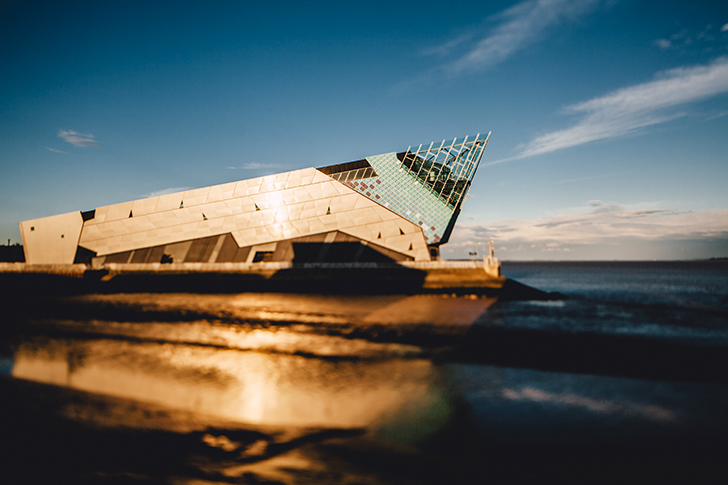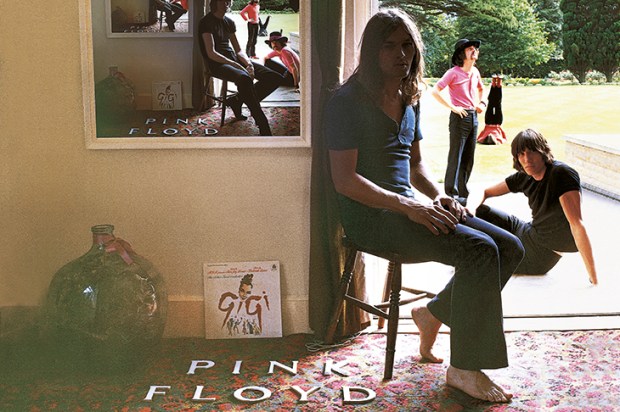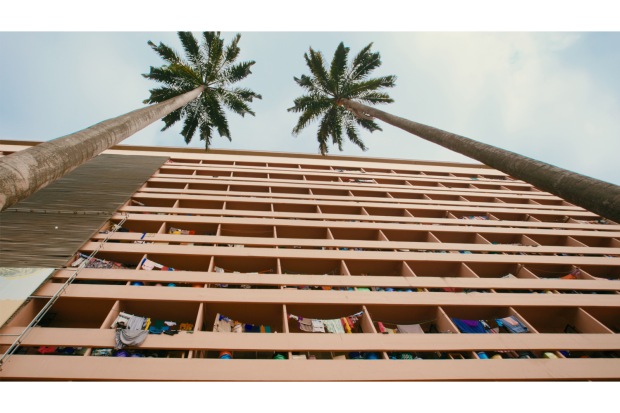In early January, lastminute.com recommended its top 15 destinations for 2017. In 12th spot, just above Montreal, Croatia and Japan, was Hull. And if you’re tempted to opt for a snooty chuckle at this point, my advice would be to go to Hull — because, judging from my recent experience, even on a cold January weekend, the place is buzzing with a hugely infectious, if still slightly bashful, sense of rediscovered civic pride. ‘I’ve lived here for 50 years,’ one man told me, ‘and this is the greatest thing that’s happened to the city in my time.’
The ‘this’ he’s referring to is, of course, Hull’s status as the UK City of Culture for 2017. When the government announced the news four years ago, it was greeted with amusement by some people — not all of them living elsewhere. (‘You’re only here for the culture,’ became a regular chant at Hull City home matches, especially when London teams were visiting.)
James Walton and Sam Jordison discuss Hull’s resurgence on the podcast:
The reasons for this initial self-deprecating defensiveness aren’t hard to find. For one thing, Hullensians — I was repeatedly told — have an inbuilt determination not to be impressed by anything too fancy. For another, the past 80-odd years have done plenty to make the city’s feelings of being either neglected or scorned by the rest of the country entirely understandable.
As the locals will soon tell you — but as hardly anybody else seems to know — Hull was second only to London as Britain’s most bombed city during the Blitz. The 1970s Cod Wars wiped out the fishing industry on which it largely depended. In 2003, the bestselling book Crap Towns chortlingly named Hull the crappest UK town of all — something the inhabitants still try to laugh off, but which clearly stung. Then, when the City of Culture year began, the Sun chose to mark the occasion with the headline ‘Scrapital of Culture’ and pictures of drunk young Hullensians on New Year’s Eve. (Personally, I wouldn’t want to live in a city that didn’t have drunk people in it on New Year’s Eve — but even if I did, I doubt I’d find one.)
And yet last Sunday morning, there were long queues outside the Ferens art gallery in the town centre, after a week in which it had already had 60,000 visitors — or more than a tenth of the total for an average year. Meanwhile, virtually everyone I met/randomly accosted had found something in the City of Culture that captured their imagination.
For Leah, dressed as Catwoman and having a cigarette outside the Yates’s pub, it was the indie bands that are coming. For Suzi, in Ye Olde White Harte — a favourite pub of Philip Larkin’s — it was the effect on her six-year-old daughter of the models of tiger moths scattered across the city in memory of Hull’s Amy Johnson. ‘She’s completely obsessed with them,’ Suzi told me — adding that when she and her husband come into town these days, they’re starting to look for what’s going on culturally, rather than just having a drink.
So why the startling change in attitude? Well, the director of Hull City of Culture is Martin Green, the man behind the London Olympic ceremonies, and here he was wise enough to repeat the same tactic of getting the locals on side first. The centrepiece of a week-long launch called Made in Hull was a film montage of the city’s achievements screened on all the grand buildings around Victoria Square — and aimed squarely at Hullensians. Just as the 2012 Olympics opening ceremony was happy to baffle non-Brits with say, footage of a weather forecaster pooh-poohing the idea of a hurricane, so Made in Hull threw in such things as the goal that sent Hull City into the Premier League for the first time. As the film concluded with the words ‘We are Hull’, most of the audience were apparently in tears — and even beginning to think their city might be pretty good after all.
That week, Made in Hull had had more visitors than the British Museum, the National Gallery and the Natural History Museum combined. But what, people wondered, would happen next? The answer turned out to be a 75-metre wind-turbine blade, made at the recently opened Siemens factory, and secretly smuggled into Victoria Square overnight. Cunningly, this combines the optimism produced by the creation of new jobs, a handy conversation starter, and a distinctly beautiful object in its own right.
Not, needless to say, that Hull didn’t have anything cultural to offer before. There is, for example, its long tradition of poetry, from Marvell to Larkin. Less grandly, there’s also the New Adelphi club, a small independent music venue of the classic but increasingly rare kind, and a Hull institution for 35 years. As luck would have it, when I went on Friday, the headliners were CrackTown, a local band playing their farewell gig. Admittedly, it wasn’t difficult to see why mainstream success has eluded them (‘This next song’s about the utter futility of all human endeavour’). Nonetheless, their stirring mix of country, rockabilly and blues with often very funny lyrics — plus the warmth of the audience — made for a wholly memorable night.
But even at the sort of Hull event that’s been going on for years, the City of Culture was never far away. During the gig, band member the Silver Fox, whose duties are described as ‘harmonica, vocals, disdain’, gave it several non-disdainful mentions — and afterwards, he proved positively starry-eyed on the subject. ‘The start it’s had…’ he said to me, with a disbelieving shake of the head. ‘If they can keep this momentum going, it will make people here feel very differently about Hull — and themselves.’
In fact, even at chucking out time on Saturday night, the City of Culture was impossible to avoid. Some of the punters (who, despite the Sun’s verdict, seemed a jolly lot to me) were going off to look at the Blade. One young woman threw a plastic glass in the air — and when it clattered on the cobblestones, her friend adopted a tone of mock reproach. ‘City of Culture!’ she said sternly.
On Sunday afternoon at the university, the impact was more orthodox, but just as striking. Lines of Thought, an exhibition of drawings from, among others, Michelangelo, Leonardo da Vinci, Degas and Picasso, is curated by John Bernasconi: a long-serving lecturer in art history and not a man, it seems fair to say, likely to be found outside Yates’s with a fag on. Yet, in his quieter way, he too is equally enjoying the City of Culture effect.
‘It’s rather exceeded all expectations,’ he tells me. ‘We’ve had queues outside before we open. I don’t think any of us quite believed the City of Culture’s figures [in advance] but they’re looking to be absolutely right. It has caught fire.’ So, I wonder, has the success of the first couple of weeks come as a surprise, as well as an obvious relief, to the organisers? ‘I think that would be fair,’ he replies.
Perhaps because of a residual snootiness of my own, this is not a sentence I necessarily thought I’d write before I went — but it may well be that something remarkable is going on in Hull.
Got something to add? Join the discussion and comment below.
Get 10 issues for just $10
Subscribe to The Spectator Australia today for the next 10 magazine issues, plus full online access, for just $10.
You might disagree with half of it, but you’ll enjoy reading all of it. Try your first month for free, then just $2 a week for the remainder of your first year.














Comments
Don't miss out
Join the conversation with other Spectator Australia readers. Subscribe to leave a comment.
SUBSCRIBEAlready a subscriber? Log in